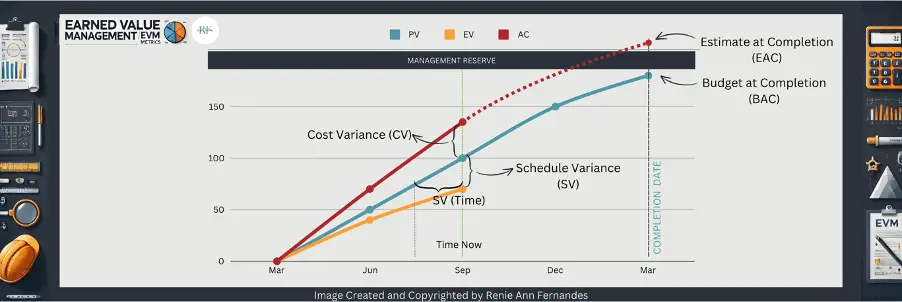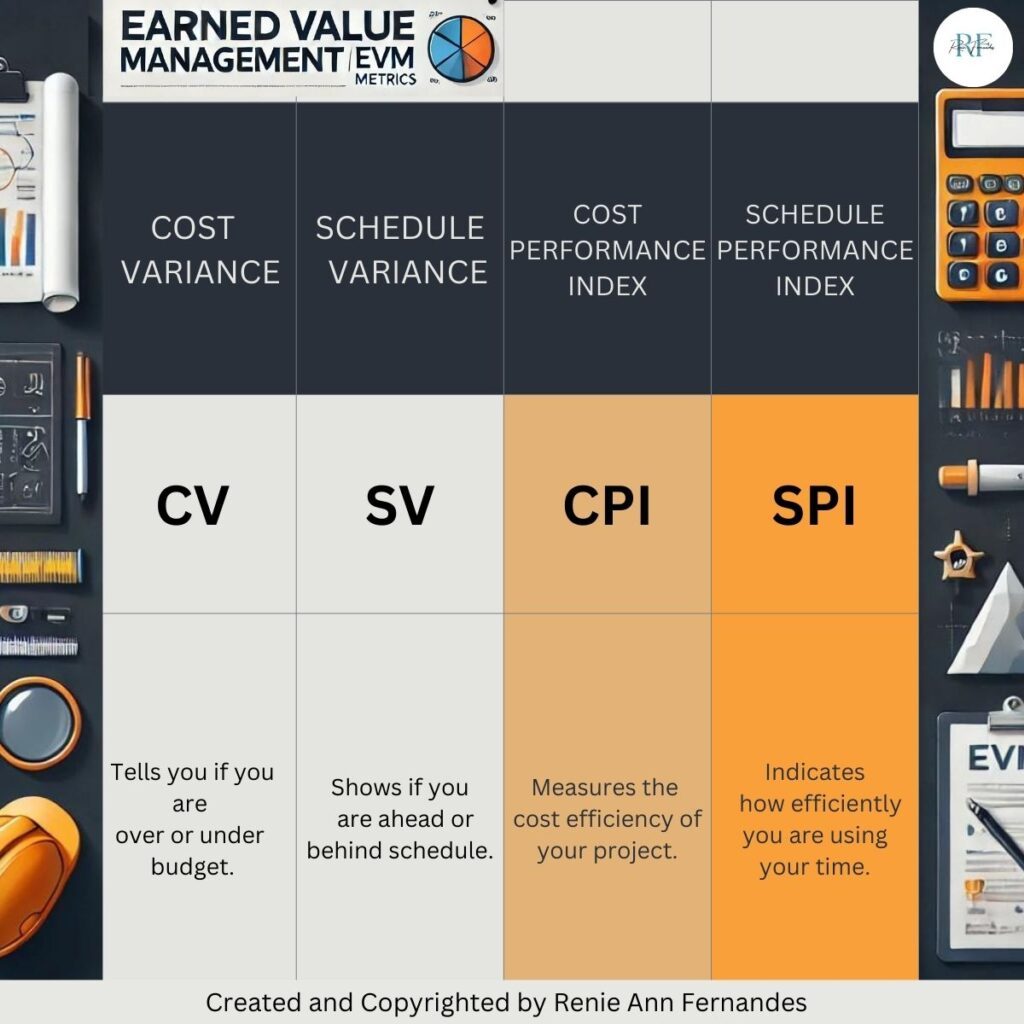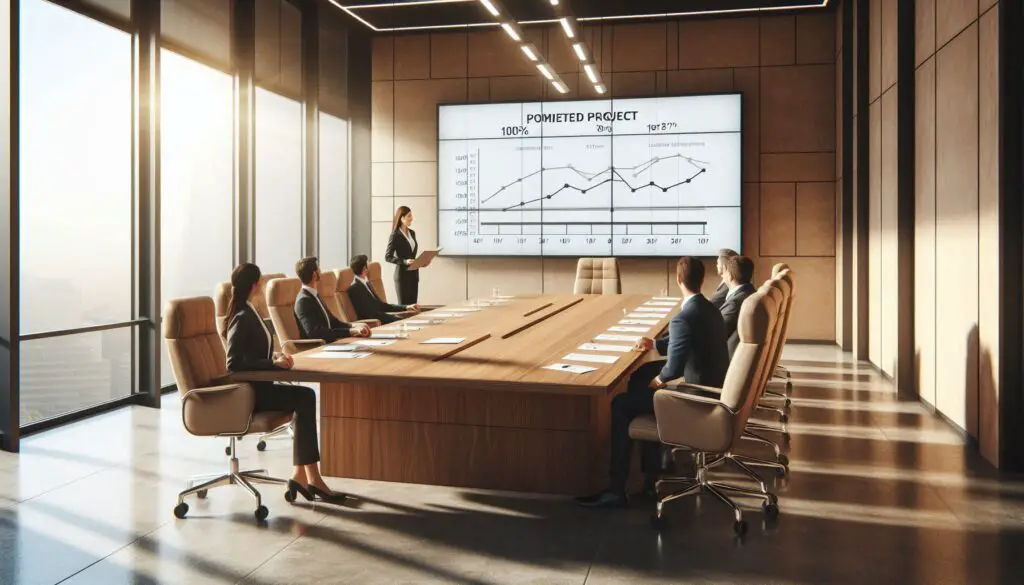Picture this: You are standing on the site of what will soon be a state-of-the-art Indigenous cultural centre in the heart of the city. The project is massive, the stakes are high, and you have got a tight deadline. How do you make sure this complex beast of a project doesn’t spiral out of control faster than a boomerang? Well, let me introduce you to your new best friend – Earned Value Management. It’s a secret weapon that can help you navigate some of the trickiest construction projects.
Now, I know it sounds a bit technical but stick with me—I will break it down in a way that even your kids might understand, minus the heavy jargon! And, once you get the hang of it, you will wonder how you ever managed without it. So, let’s explore the concept of Earned Value Management!

What is Earned Value Management (EVM)?
Let’s start with the basics.
Earned Value Management is a project management technique that helps you measure how well your project is doing in terms of time and cost.
Imagine you are building a Lego set with your child. You have got the instructions (the project plan), you know how many pieces there are (the budget), and you know how long it should take (the schedule).
EVM is like checking in halfway to see if you are on track—do you have the right number of pieces in place, and are you spending the right amount of time putting them together?
Let me use another example of a building a new primary school, to explain how it works. Imagine you have got a project plan that says you should have completed 25% of the construction work by a certain date, and that this work should have cost you $500,000.
With EVM, you can measure two key things:
- Planned Value (PV): This is the budgeted cost of the work you were supposed to have completed by that date – in this case, $500,000.
- Earned Value (EV): This is the ‘value’ of the actual work you have completed, measured against your original plan. So, if you have managed to complete 20% of the work, your EV would be $400,000. The word ‘value’ is the key here. It isn’t the amount you spent for the actual work, but the value or worth of the actual work.
By comparing the PV and EV, you can calculate a bunch of other useful metrics that tell you how your project is tracking. I will get into those a bit later, but the key thing to understand is that EVM gives you an objective, numbers-based way to measure your project’s performance.
In more technical terms, EVM integrates scope, time, and cost to assess project performance and progress. It’s not just about tracking whether you are on schedule or within budget; it’s about understanding how much value you have actually earned from the work completed at any given point.
Why is EVM Important in your projects?
You might be wondering, “Why should I bother with Earned Value Management in my projects?” Well, it’s because EVM is like a health check for your project. It is one of the most powerful tools you can have in your project management toolkit. It helps you in:
- Improved Project Control: Earned Value Management gives you a clear picture of your project’s health. It’s like having a dashboard that tells you exactly where you stand and what you need to adjust.
- Early Risk Detection: By comparing planned progress with actual performance, EVM can help you spot issues early on. This means you can take corrective action before small problems turn into big disasters.
Let’s go back to our primary school example. If you have only completed 20% of the work but should have done 25%, that’s a red flag. With that information, you can dig deeper to figure out what’s causing the delay and get things back on track.
Imagine if you didn’t have EVM – you might not realise there was a problem until it was too late to do anything about it. By that point, you could be staring down the barrel of massive cost overruns, angry stakeholders, and a completed project that’s months behind schedule. Not a pretty picture, is it?
- Informed Decision-Making: With EVM, you are not just guessing. You have data-backed insights that guide make informed decisions, helping you steer the project towards success.
Let’s say you are managing the fit out of the art room in the cultural centre, and you are trying to decide whether to bring in extra resources to speed up the project. With EVM, you can crunch the numbers and see exactly how much it would cost and what impact it would have on your schedule.
Compare that to trying to make that call without any hard data – you would basically be guessing and hoping for the best. EVM takes the guesswork out of project management and helps ensure you are making the right call.
- Stakeholder Confidence: When you use EVM, you can provide stakeholders with clear, concise updates that show exactly how the project is performing. This builds trust and confidence.
It also helps hold team members accountable. If someone’s not delivering on their part of the work, the numbers will show it. That means you can address issues head-on before they snowball.
Having that level of transparency and accountability is a game-changer when you are juggling all the moving parts of a construction project.
- Achieving Project Outcomes: Ultimately, EVM helps ensure that your project meets its agreed-upon objectives, while staying on budget, finishing on time, and delivering the expected quality.
Step-by-Step Process to use Earned Value Management in your Projects
Alright, now that you know what EVM is and why it’s so important, let’s talk about how you actually use it in the real world. Here is a step-by-step look at how EVM works in the real world.
Step 1. Project Planning
Before you even break ground, you need a solid project plan. This is where you define the project scope, establish a budget, and create a schedule. Think of this as your project’s roadmap.
Step 2. Defining the Work Breakdown Structure (WBS)
Next, you will break down the project into smaller, manageable pieces. This is known as the Work Breakdown Structure (WBS). Each piece is assigned a budget and a timeline.
Step 3. Baseline Your Project
Once you have got your plan and WBS, it’s time to establish your baselines. Baselining is especially important if you plan to use Earned Value Management in your project.
Baselines are your reference points for scope, cost, and schedule. Think of these baselines as the rules of the game—they are what you will measure against as the project progresses.
Step 4. Tracking Progress

As the project moves forward, you will regularly compare actual progress to your baselines. This is where the magic of EVM comes into play. You will measure three key metrics:
- Planned Value (PV): This is the value of work that should have been completed by a certain point in time, according to your plan.
- Actual Cost (AC): This is what you have actually spent so far.
- Earned Value (EV): This is the value of the work that’s actually been completed.
For example, let’s say you planned to have 50% of the project done by now (PV), but you have only completed 40% (EV), and you have already spent 60% of your budget (AC). This would raise a red flag, indicating that you are behind schedule and over budget.
What Information Can You Get From EVM?
EVM isn’t just about tracking numbers; it’s about extracting meaningful insights that can guide your project. Now let’s look at some technical stuff. Here’s what a project manager or project control manager can learn from EVM calculations:
- Cost Performance Index (CPI)
- Formula: CPI = EV / AC
- What it tells you: If your CPI is greater than 1, you’re under budget. If it’s less than 1, you’re over budget.
- Schedule Performance Index (SPI)
- Formula: SPI = EV / PV
- What it tells you: An SPI greater than 1 means you’re ahead of schedule. Less than 1 means you’re behind.
- Estimate at Completion (EAC)
- Formula: EAC = BAC / CPI (BAC is the Budget at Completion)
- What it tells you: This estimate shows how much the project will cost in total, based on current performance.
- Estimate to Complete (ETC)
- Formula: ETC = EAC – AC
- What it tells you: ETC indicates how much more money is needed to complete the project.
- Variance at Completion (VAC)
- Formula: VAC = BAC – EAC
- What it tells you: VAC shows whether you will finish under or over budget.
In summary, by comparing values, you can calculate important metrics like:

How EVM Helps in Managing or Averting Risks
As a Project Manager, you are always going to keep an eye out for potential risks that could derail your projects. And having these EVM tools helps manage these risks. Construction projects are notorious for unexpected issues—whether it’s a supplier delay, weather conditions, or unforeseen site conditions. Here’s how EVM can help:
- Early Warning System: EVM provides early warnings for both schedule and cost overruns.
When you spot a negative trend, you can investigate and take corrective actions. By tracking the Cost Performance Index (CPI), you can spot early warning signs that the budget might be starting to spiral. If the CPI drops, you can dig into the numbers, find the root cause, and implement corrective measures before the problem snowballs.
- Informed Risk Mitigation: With clear data on where you stand, you can develop targeted strategies to mitigate risks.
For instance, With EVM, you can closely monitor the Schedule Performance Index (SPI) and see if your project is starting to fall behind. If the SPI dips below 1, that’s your cue to jump in and take action. Maybe you need to explore alternative suppliers or adjust the construction sequence to work around the delayed deliveries. Whatever the solution, EVM gives you the data needed to act quickly and decisively.
- Real-Time Decision Making: EVM enables real-time decision-making by giving you up-to-date information. This helps you respond quickly to emerging risks, reducing their potential impact.
Imagine a scenario where the cost of building materials is creeping up. With EVM, you would be able to see that trend emerging, allowing you to renegotiate supplier contracts, value engineer certain elements, or even engage the client about adjusting the budget. That kind of proactive risk management is gold, my friends.
Achieving Agreed Project Outcomes with EVM

At the end of the day, remember the whole reason we use project management tools like EVM is to make sure we deliver the project successfully —on time, with the agreed scope, quality, and budget. EVM plays a crucial role in ensuring these agreed project outcomes are met.
- Budget Management: EVM helps keep your budget in check by providing continuous feedback on your spending versus your plan. You can make adjustments as needed to avoid cost overruns.
- Time Management: By tracking your schedule performance, EVM ensures that you stay on track, or that you take the necessary steps to get back on track if you fall behind.
- Quality Assurance: While EVM is primarily focused on time and cost, the insights it provides can also help ensure that quality isn’t compromised. If you are rushing to meet a deadline, EVM can highlight the need to balance speed with quality.
- Stakeholder Satisfaction: With EVM, you can provide clear, objective updates to stakeholders, showing them how the project is progressing. This transparency builds trust and ensures that everyone is aligned with the project’s goals.
Now going back to our example of building a state-of-the-art Indigenous cultural centre. The client has given a very specific brief – they want the building to be highly energy-efficient, with features like solar panels, rainwater harvesting, and smart building controls.
With EVM, you can track whether you are delivering on those sustainability objectives. If the Earned Value (EV) starts to lag behind the Planned Value (PV) for the ‘green’ components of the project, you know you need to step in and find out why. Maybe there is an issue sourcing the right materials, or the installation is taking longer than expected.
With that information, you can work with the project team to get things back on track.
Whatever the solution, EVM gives you the data you need to make informed decisions and ensure you achieve the agreed outcomes.
Let's wrap up!
Whew, that’s a lot of information to take in! But I hope I have convinced you of the power of Earned Value Management when it comes to managing projects to ensure successful outcomes.
Whether you are building a new primary school, renovating a hospital wing, or constructing a community centre, EVM is a game-changer. It gives you the data you need to identify problems early, make better decisions, and keep everyone accountable. And most importantly, it helps ensure you deliver the project successfully, on time and on budget.
So if you are a Project Manager or aspiring to be one, I highly recommend getting up to speed on EVM. It might seem a bit technical at first, but trust me, once you start using it, you will wonder how you ever managed projects without it.
My Recommendations
Books
Tools and Resources
- Microsoft Project: Great for planning and tracking EVM metrics.
- Primavera P6: Widely used in the construction industry for project scheduling and EVM.
- Asta Powerproject: A powerful tool for construction project management with EVM capabilities.


